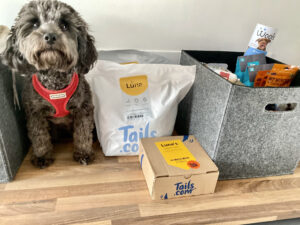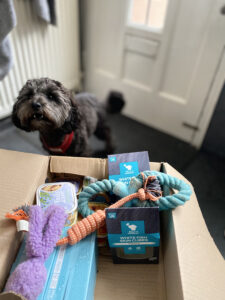 Moving house can be tough on us – but it’s even harder on our pets. They don’t understand why everything in their environment is changing. Moving can lead to pets going missing (in search of their previous home territory) or behavioural changes. Like the rest of us, pets need a little extra TLC at moving time. Fortunately, there are a few steps you can take to make their move easier.
Moving house can be tough on us – but it’s even harder on our pets. They don’t understand why everything in their environment is changing. Moving can lead to pets going missing (in search of their previous home territory) or behavioural changes. Like the rest of us, pets need a little extra TLC at moving time. Fortunately, there are a few steps you can take to make their move easier.
Things to do before the move
Keep your pet’s routines, (like feeding and walks), the same. Treat them with the same level of attention you would normally give them.
Visit your veterinarian a couple of weeks before moving. Request a copy of your pets history, a vaccination certificate, and a desexing certificate. Be sure your pets are up to date with their vaccinations, and also update your new address in their microchip database. If your pet is a senior or has health problems, ask whether a mild sedative would be advisable before travel. You can also speak to your vet about obtaining a pheromone plug-in device. Pheramone devices emit a scent which mimics the calming scent released by a mother to her litter.
If your animal is staying with you during the move, then confine them to one secure room so that escape and injury cannot occur whilst people are going in and out of the house. Leave them in a quiet area with their familiar possessions. Place the travel carrier in the room with the door open so your pet can adapt to it before travel day. On moving day, it might be an idea to board cats and dogs or ask a friend to look after them. This will limit the amount of stress placed on your animal.
Pack your pet’s belongings last. Do not wash bedding until a couple of weeks after the move, so they have something familiar smelling in the new house.
If you’re moving nearby, let your dog visit your new digs before moving day (this can also be effective with cats, but keep them securely in their crates). Show them that you’re relaxed in the new environment. As it is common for animals to wander back to their previous home, you can help overcome this by securely confining your pet to the new house.
Travel checklist
Make sure you have the following before the move:
- veterinary records, certificates, and recent photos
- your pets usual food
- food and water bowls
- toys and treats
- leads (both cats and dogs)
- beds, pillows, towels or other crate liners
- plastic bags and scoops for dogs
- litterbox for cats
- cage covers for birds and rodents
- paper towels for messes
- provisions for the first day at the new home
If traveling a long way, prevent travel sickness by not feeding them for 12 hours before the journey. If you know your pet suffers from travel sickness, ask your vet about anti-sickness medications.
Things to remember during the move
- put new identification tags on depicting your new address – and be sure to get their microchip records changed to your new address
- make sure your pet is safely secured in the vehicle they are to be transported in
- make sure that they get regular toilet and water breaks.
Remember, the temperature in a parked car rises rapidly. Never leave your pet alone in a parked car.
In the new home
Check the boundary fencing to make sure it’s secure, high, and free from holes before letting your dog run free in the garden. If your dog is able to escape, only take them out on a lead until you are able to do the necessary improvements.
 Unpack the essentials before introducing your pet to the new house so they can see familiar items within the unfamiliar house.
Unpack the essentials before introducing your pet to the new house so they can see familiar items within the unfamiliar house.
In the new home, choose a small room to be your pet’s pet room, where they can feel secure as you move in furniture and belongings. As much as possible, have furniture, bowls, and toys in place before you let your pets out of their crates. Don’t let your pet outdoors without a lead until they’ve adapted to their new surroundings.
If your pets misbehave, consider ways to reduce their stress. If you suspect they may be ill, make an appointment with your vet. Don’t punish your pets for initial misbehaviour. Cats especially will not understand and only cause them to distrust you. Be patient with your pet in the new home and make allowances for ‘accidents’ on the carpet if they should happen. Don’t punish your pet or draw attention to it as it may make the problem worse. When your pet goes to the toilet in the correct area, praise them.
Make sure that you stick to your usual routines, as this will help them to settle. So, feed and walk at the usual times.
Don’t give more or less attention than they are used to having – this may cause them to become anxious or over dependent on you and lead to behaviour problems.
 To help your dog settle in, take them for lots of walks. This will help your dog get used to their new surroundings.
To help your dog settle in, take them for lots of walks. This will help your dog get used to their new surroundings.
If you have any concerns about your pets safety or behaviour during or after a house move be sure to consult your preferred veterinarian.
As always, I’m hoping this information is useful.
Many thanks for taking time out to read our latest blog!
SuPaw Nanny
